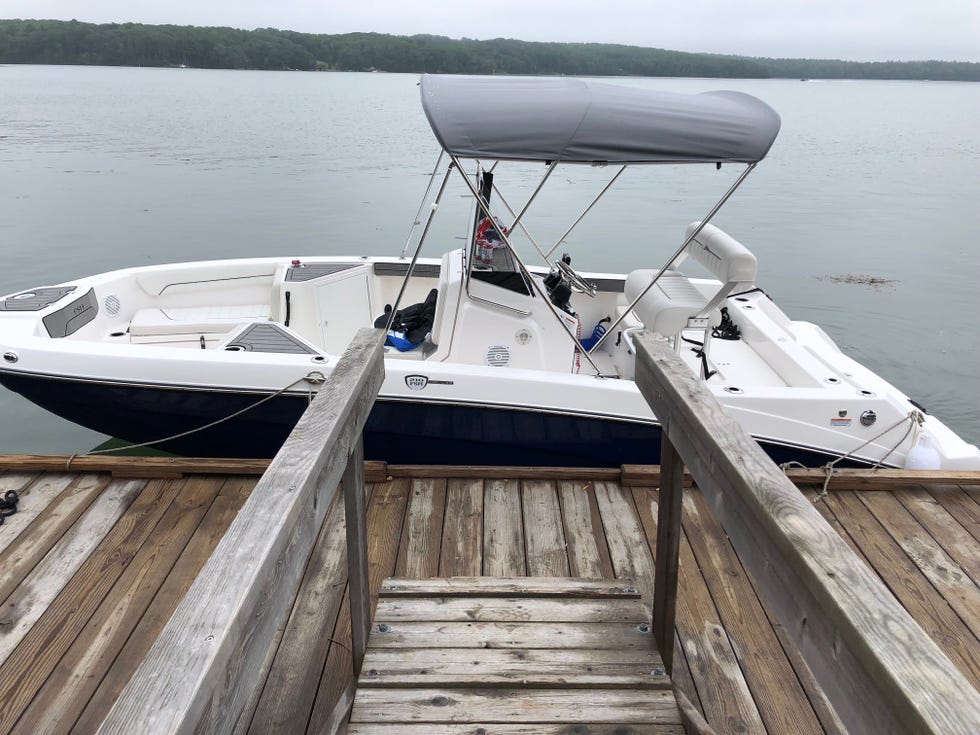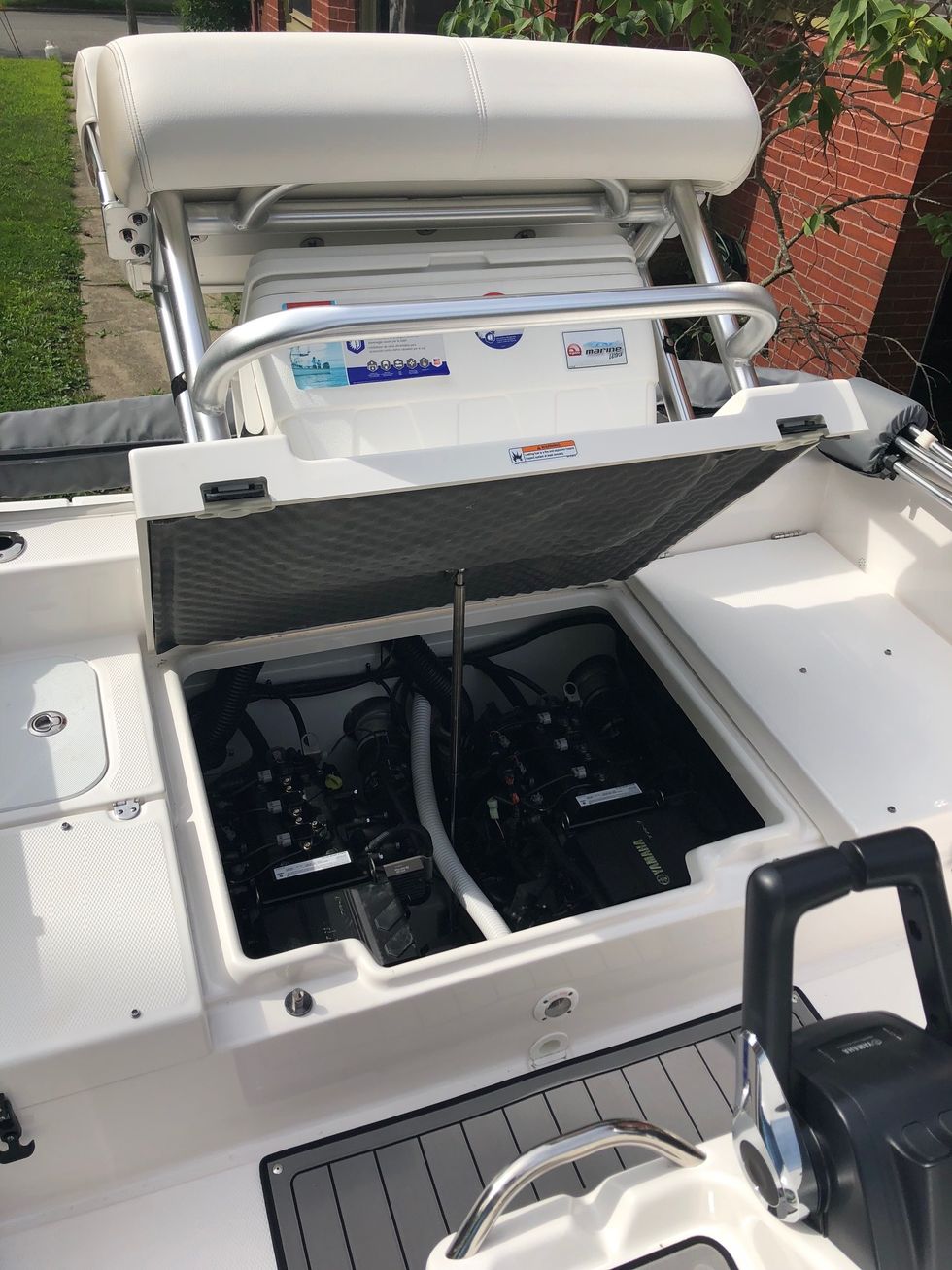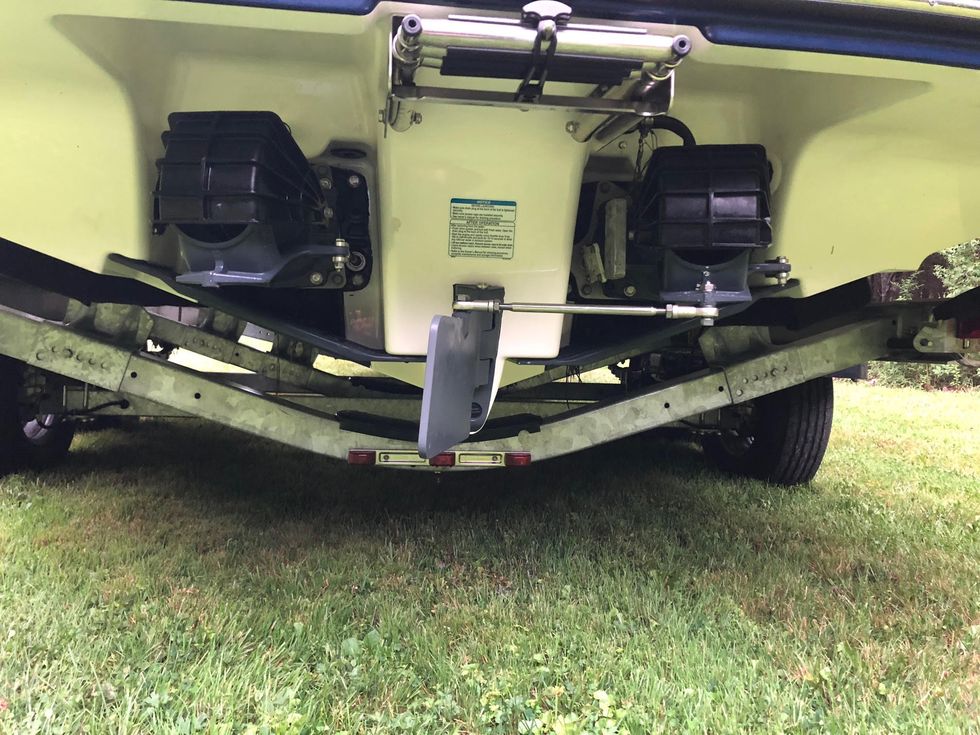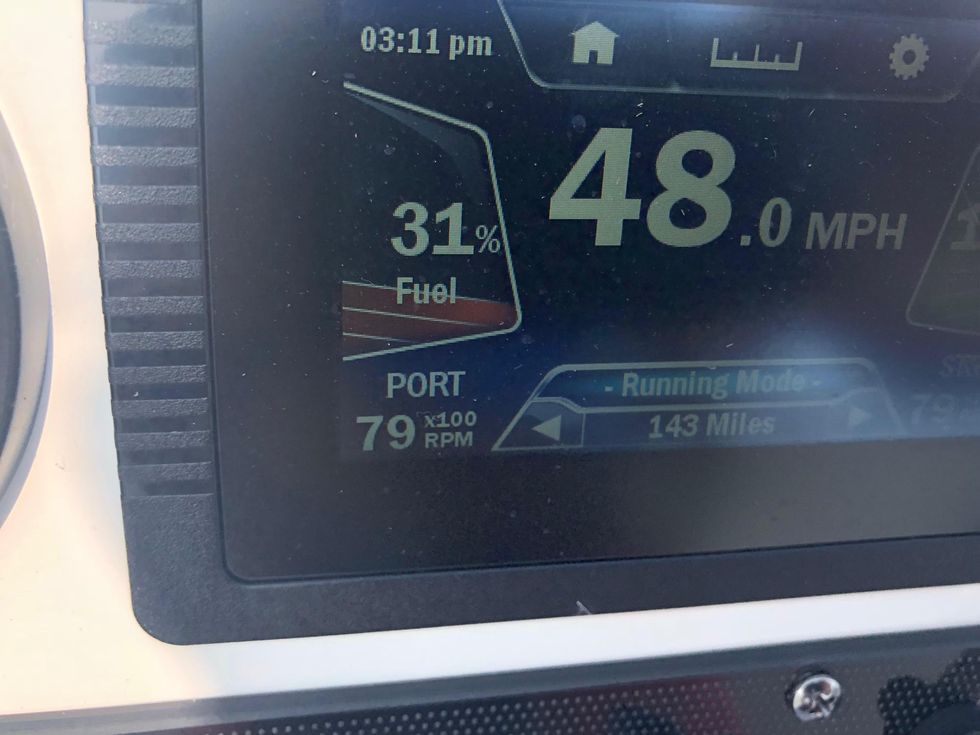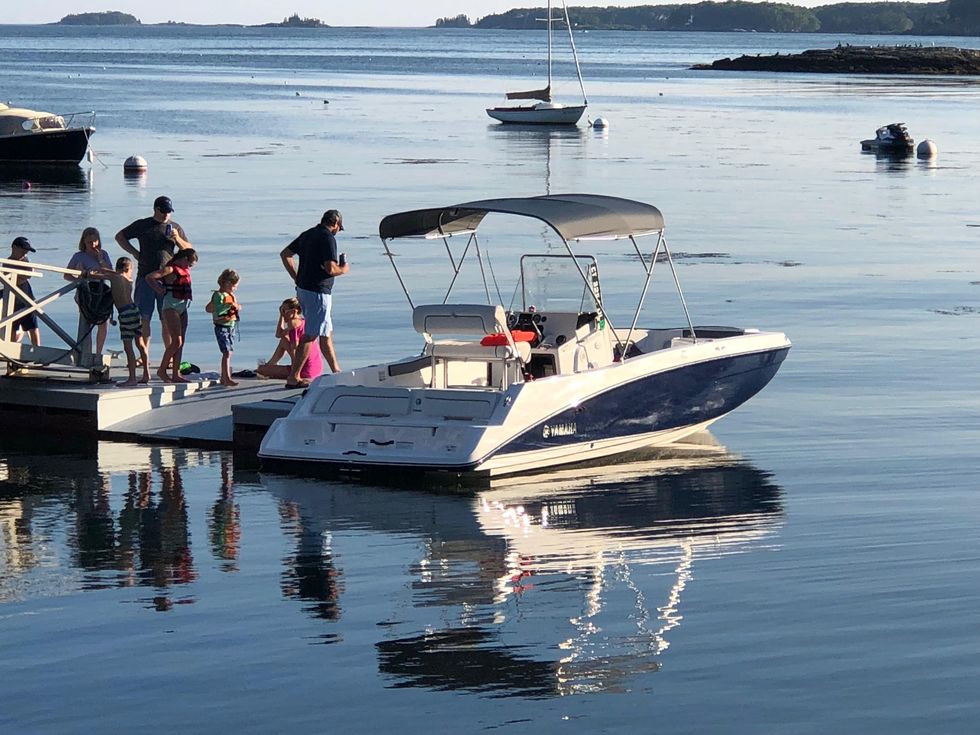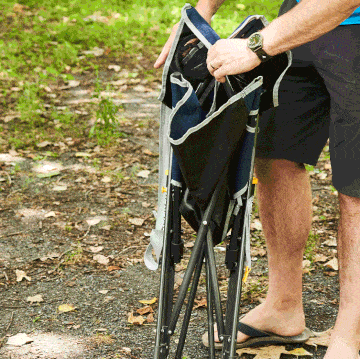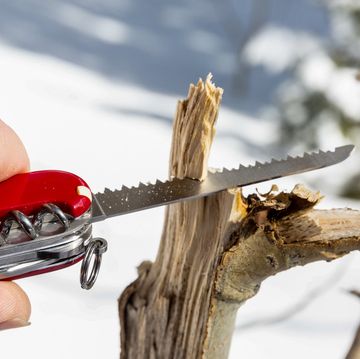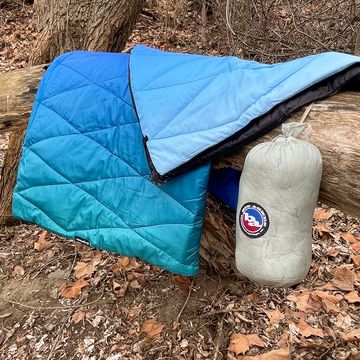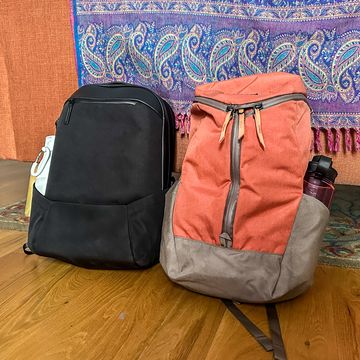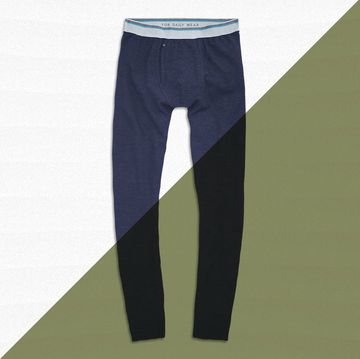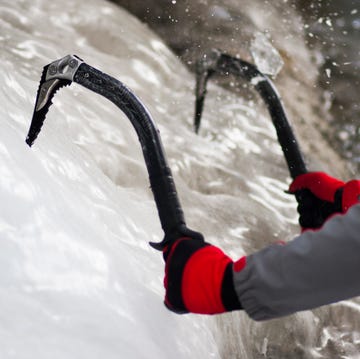Boats don’t fundamentally change that much. If you compare a 2019 model to an equivalent from 20 years ago, the two biggest differences will be four-stroke power (or an Evinrude E-TEC) and probably more seating. Nobody’s really blowing up the formula. Except Yamaha, that is. The 210 FSH is a wild reimagining of how to build a boat. Or, more precisely, how to propel one.
Instead of an outboard motor with a propeller, the 210 uses twin inboards with jet drives. Each three-cylinder engine displaces only 1 liter but makes 115 hp. That’s a lot of juice for a 21-foot boat.
Because there’s no outboard hanging off the back, the whole topside of the hull is usable. The Yamaha even features rear-facing stern seats for when you’re anchored. You can tow tubers or water skiers without needing a tow pylon or bridle to clear the outboard. When those riders climb back aboard, there’s no razor-sharp prop in the water. Plus, you get the offshore redundancy of twin engines, which are seldom (if ever) seen on a boat this size. With no drives and props dangling below the hull, you can get into really skinny water. The draft is a mere 17 inches.
All of this sounds appealing, but how does it work in practice? I took a 210 FSH Deluxe to coastal Maine to find out.
I’ve seen plenty of Yamaha boats on lakes, but the Gulf of Maine is a harsher kind of mistress. A sign at Pemaquid Point warns not to get too close to the water because sometimes a rogue wave will roll up and drag people in. That’s how mean the ocean is around here—it’s out to get you even when you’re on land.
I pick up the vessel at G&R Marine in Connecticut, a huge Yamaha dealer, where Bryan Douglas gives me a tutorial. Granted, I’m talking to the guy that sells these boats, but Douglas seems like a no-BS believer.
“I’ve sold 45 different lines of boats over the years,” he says. “And with these”—he gestures to the Yamahas on the lot—“once I sell one, I never see it again.” Meaning they don’t have problems. Yamaha’s warranty is three years on the components and lifetime for the structure (for the original owner). Douglas tells me it doesn’t really matter what the warranty is, though, because they don’t break.
But what about salt water? One of the big advantages of outboards is that you can tilt them out of the water so your drive unit isn’t marinating in corrosive stew. “I’ve got customers with them bottom-painted in Long Island Sound, Block Island, the coast of Connecticut,” Douglas says. The external drivetrain, like the jet nozzles, is coated with a three-part saltwater-resistant armor consisting of Alumite, a ceramic coating and epoxy paint. “The only thing I do is add a ground to the throttle cable if they’re going to be in a marina, where there might be some stray voltage in the water. It’s got zincs, but grounding the throttle cable helps stop electrolysis,” he says. Douglas shows me how to use No-Wake mode and cautions me that the steering is quicker lock-to-lock than most marine systems. “It’s got a keel and the articulated keel, so it handles like an inboard Downeast boat,” he says. “It tracks straight so you don’t need to steer a whole lot.”
About that articulated keel: This is what you might recognize as a rudder, except it doesn’t protrude below the hull centerline. Instead, it extends the keel with a steerable section tied to the starboard jet nozzle. The idea is to eliminate the wander that afflicted early jet-drive boats, which lack the stabilizing influence of an outdrive.
Besides directional stability, another jet-drive issue has been the tendency for the pumps to clog with detritus in the water. Yamaha addressed that by adding clean-out ports at the stern. Just flip up the engine cover (the engines will quit automatically if you’ve forgotten to turn them off) twist a handle, and reach down to clean out whatever might be in there. From the look of the water in Maine, I’ll be glad I have these. There must’ve been a storm or something freaky going on with the tides, because Pemaquid Harbor is clogged with floating detritus—sea weed, branches, kelp. I grew up around here and I don’t remember it ever being this bad. A guy at the boat ramp confirms my impression. “Lotta crap in the water today,” he growls.
I launch the 210 FSH and put it in No Wake Mode. The throttle gives you better steering response via the Thrust Directional Enhancer, which directs thrust down, helping the articulated keel do its thing. From this throttle position, you can bring up the revs via the No-Wake button, giving yourself about 5 mph of headway with tight steering (and, as advertised, no wake). The downside of low-speed puttering, at least around here, is that it gives the omnipresent seaweed an opportunity to wrap itself on the driveshafts. Running at speed, you julienne everything right out the back, and out in the ocean, it’s not a problem. But near shore in Maine, it’s a nuisance. Where I live now in North Carolina you’d probably never need to touch the cleanouts.
My own boat back home is a Sea Fox 216 DC with a 150-horse Evinrude E-TEC, so I’m constantly comparing the Yamaha to my known frame of reference. One of the biggest surprises is how much better the 210 FSH handles rough water. My boat, along with many salty-looking hulls, has a pronounced Carolina flair, with the bow flaring out to deflect spray. The 210 FSH looks more bullet-nosed, with the running surface continuing almost all the way forward. It looks like a wet ride, based on my received wisdom about bow flair and adjustable trim (speaking of, the 210 has none). The drives don’t adjust and there are no tabs, so the running angle is what it is. I didn’t like the idea of that, either, since I always trim to the conditions—maybe bow high to run out a rough inlet, or tabbed down to meet a sharp chop. I wasn’t sure how one-size-fits-all would work.
As it turns out, it works just fine. I could run the Yamaha wide open across wakes without inducing anything more than a dull thud from the hull. Out in the swells, the limiting factor is gravity. Keep the hull in the water and the ride is smooth. I couldn’t believe that I could set cruise control comfortably at 30-plus mph in big swells in a 21-foot boat. The 210 FSH throws spray low and wide, non-flared bow notwithstanding. If I had to guess, I’d say that maximizing the running surface equals less pressure on the hull and consequently a great ride. It’s also a fast hull. I saw 48 mph a couple times (confirmed with my Navionics app), which is definitely on the quick end of the spectrum for a boat this size. Even loaded up with passengers, it was happy to run 40 mph.
As for maneuverability, the 210 FSH is least as good as any single-outboard boat, and probably a little bit better because you can work each throttle independently. Put one engine in forward gear and the other in reverse and you can pirouette the boat in place. You’ve just got to stay on-throttle with your docking maneuvers—go in at an angle with confidence, bang reverse and crank the wheel to bring the stern in. After some practice, I could parallel park it at crowded docks without fear of a major nautical mishap.
If the twin-jet drive system has a major demerit versus a four-stroke outboard, it’s probably noise. I didn’t have a decibel meter, but from the helm you won’t mistake the TR-1s for a whispering Verado. For one thing, three-cylinders just aren’t as smooth as an inline 4 or V6. And because the engines are small-displacement, they have to rev higher than an outboard would. Peak power comes at about 7,800 rpm and you’re often cruising at 6,000 rpm. The perceived noise level is highest for the captain, since the helm seat is literally on top of the engines. However, when I asked my wife about the noise level in the bow seats, she said, “What noise?” If it were my boat I might add a few layers of Dynamat to the hatch.
I think that overall, the 210 FSH’s advantages far outweigh its drawbacks—twin inboards are badass big-boat stuff. It’s also a great value. The 210 FSH starts at $41,099 with a trailer, while the top of the line Sport, with a T-top, is $46,499. It’s hard to put that in perspective because most boat companies are notoriously cagey about listing prices, but a Sea Fox 226 Commander center console shows a dealer asking $66,995 with a 200-hp Yamaha and no trailer. That boat is a foot longer but lists an eight-person capacity. A Boston Whaler 210 Montauk with a 200-horsepower Mercury Verado and a trailer prices out at $66,999. Like I said, boat prices tend to be opaque and all over the place, but the 210 FSH is probably coming in at least 10 grand less than you’d pay for most comparable boats after you’re done arguing with the dealer.
The biggest challenge for Yamaha is probably inertia. People grew up with outboards. They know outboards. Hell, Yamaha itself sells loads of outboards. But the 210 FSH proves that’s not the only approach that works, that it’s not too late to start from scratch and try something different. If this was your first boat, you’d probably wonder why anyone does it any other way.
Ezra Dyer is a Car and Driver senior editor and columnist. He's now based in North Carolina but still remembers how to turn right. He owns a 2009 GEM e4 and once drove 206 mph. Those facts are mutually exclusive.

